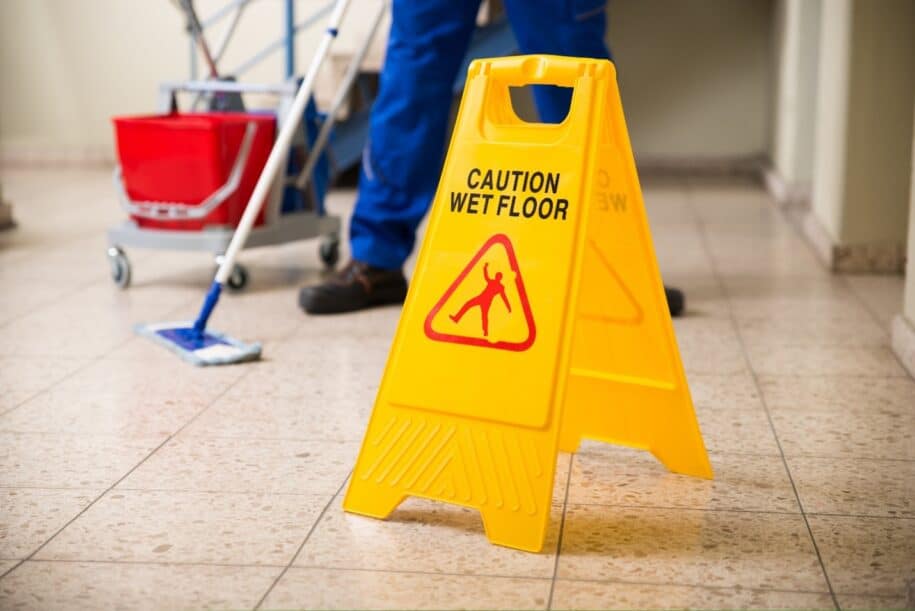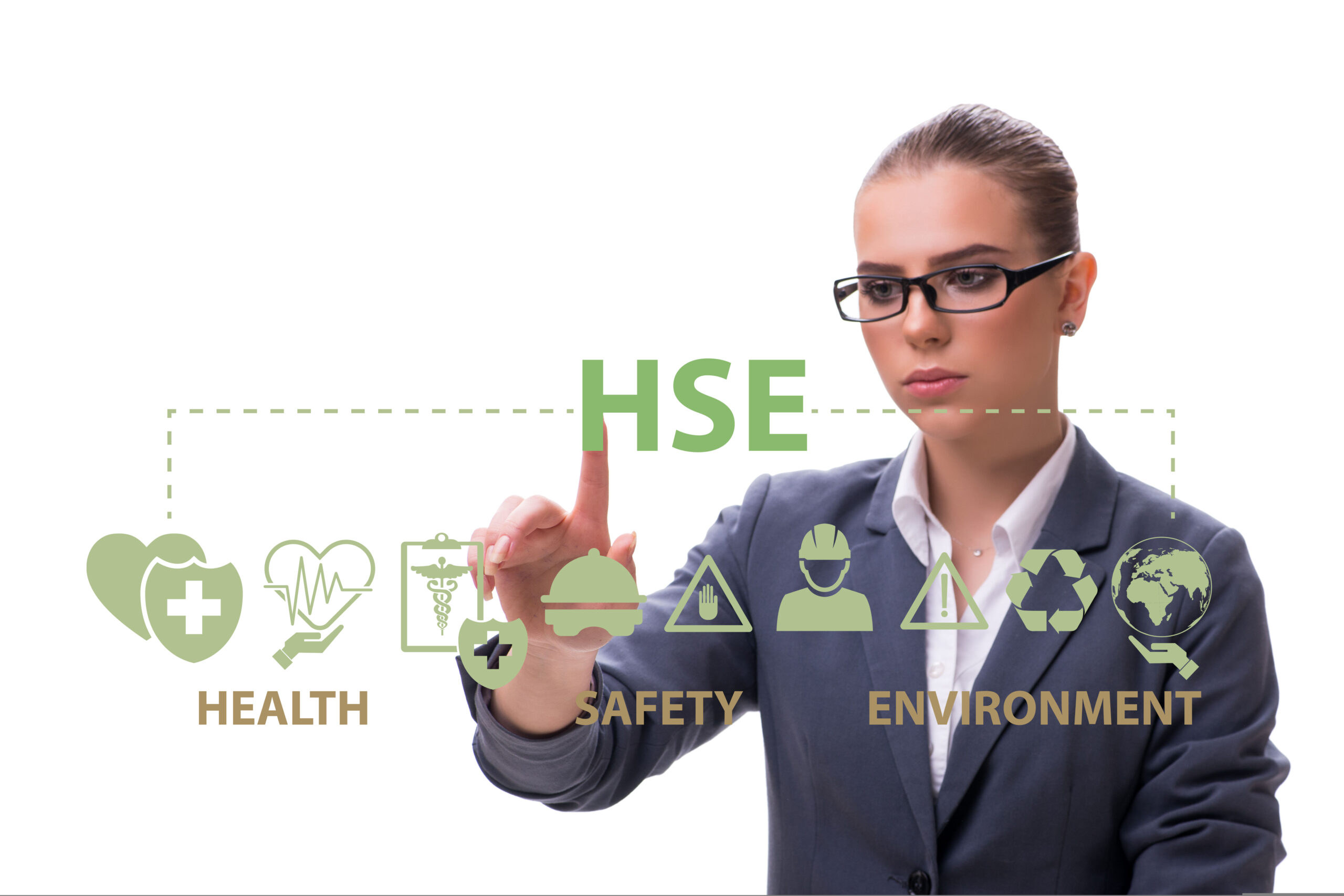Slips, trips, and falls (often referred to as “STF injuries”) can be a common occurrence in organizations due to poor workplace design, the deterioration of walking and working surfaces, the lack of good housekeeping practices, and unsafe behavior. Simple day-to-day tasks such as walking, using stairs, and climbing ladders are potential hazards that lead to slips, trips, and falls. These unintended hazards are often overlooked and not given much consideration in the workplace. However, NIOSH statistics indicate that this should be taken seriously, as STF injuries account for 18% of all non-fatal, traumatic occupational injuries in the United States.
Aside from the obvious dangers to life and limb, ignoring the existence of slip, trip, and fall hazards in a workplace can lead to several negative consequences for stakeholders. A recent news release from the U.S. Department of Labor described in detail how a singular corporation (with store locations across America) proved to be continually negligent in complying with OSHA standards for slips, trips, and fall hazards. Inspectors commonly found exit routes to be obstructed, posing serious risks to employees and customers in the event of an emergency evacuation. Other observed hazards included unstable stacking, which could result in a fall or objects striking workers. In the article, OSHA representatives made it clear that these repeated violations were taken to indicate that the corporation has an overall disregard for the safety of individuals. OSHA’s proposed fines totaled over $1.2 million. OSHA’s publication of this news release seems to be an active reprimand to this brand, tarnishing the corporate image, and serving as a reminder to other organizations that (without a doubt) profits should never be a higher priority than people.
5 Ways to Stay Compliant and Prevent Slips, Trips, and Falls
Slips, trips, and fall hazards are pervasive, whether you happen to be in a construction site, a campus hallway, a warehouse shopfloor, a chemical laboratory, or an office space. The 10 most common reasons for slips, trips, and falls are:
- Uneven walking surfaces.
- Obstructions on the floor.
- Weather conditions that result in wet, slippery, or uneven surfaces.
- Improper material handling.
- Inadequate hazard signs.
- Distractions while working.
- Inadequate workplace lighting.
- Inappropriate footwear.
- Lack of training.
- Poor housekeeping.
Initiating the following 5 procedures within a safety program can help prevent slips, trips, and falls in the workplace.
- Complete a hazard assessment. Employers need to complete a walkthrough survey to determine the STF hazards within a worksite. The purpose of the hazard assessment is to determine slip resistance, trip hazards along flooring transitions, and the adequacy of fall protection for different walking and working surfaces. Hazard assessments can help determine the high, medium, and low-risk areas within a workplace. These ratings can be recorded and kept electronically using EH&S management software. All high and medium risks should be prioritized when assigning corrective actions.
- Indicate hazardous areas with signs. Areas where STF hazards are prevalent must be clearly identified with warning signs. Hazard signs are required when a working or walking surface needs to be repaired or redesigned. Additionally, signs should be used to alert workers of more temporary conditions such as chemical spills and other slip hazards (ice, snow, etc.).
- Perform regular worksite inspections. Working conditions are always in flux with material movement and deterioration. Periodic worksite inspections must be conducted to ensure the integrity of the work areas and to maintain appropriate housekeeping conditions. Any deficiencies observed must be recorded and communicated to the appropriate stakeholders for timely intervention. EH&S management software can make it easier and more effective to record, communicate, and follow up on the findings of worksite inspections.
- Always report and track incidents to determine follow-up actions. Cloud-based EH&S management software has changed how incident data is recorded. With mobile accessibility, this technology offers an immediate solution for workers to report unsafe conditions, near misses, and any incidents on the spot. Additionally, the process of tracking data for analysis, determination, and assignment of appropriate follow-up actions can also lead to a reduction in STF injuries and incidents.
- Train staff to recognize slip, trip, and fall hazards. While it is necessary to initiate controls to address hazards, it is equally essential to educate and equip workers to identify and prevent them. Workplace information such as images, reports, and case studies can all be used in the development of impactful training. EH&S management software can also assist in this step by enabling managers to track training completion and progress.
Organizations are increasingly turning to cloud-based software to serve as the backbone for implementing robust, field-level safety compliance. This is because integrated EH&S management software can provide an organization with complete control of its on-site and documented compliance needs and a comprehensive range of solutions for managing slips, trips, and fall hazards, even across departments, locations, and countries.
Publisher Bio
The SafetyStratus Research Advisory Group (RAG) brings together thought leaders from the global environmental, health, and safety community to promote best practices and provide key insights in the profession and the industries they serve. The Research Advisory Group also advocates, where practical, the intersection of and advances with the use of technology, such as the SafetyStratus enterprise EHS software platform. Group membership consists of representatives from across varied disciplines and market sectors as well as select members of the SafetyStratus team.
The primary objectives of the SafetyStratus RAG partnership are to:
- Build a strategic partnership between EHS practitioners and the SafetyStratus team.
- Provide engaging and practical content to the global EHS community.
- Provide discipline and market feedback specific to SafetyStratus products and services.
While the objectives of the RAG are varied, the primary public-facing outcome will be available through engaging and practical content found on the SafetyStratus resource pages. Various articles, papers, and other valuable resources will be produced and shared as part of an ongoing effort to cultivate a robust community. Ultimately, the SafetyStratus RAG will expand to have a broader reach and provide opportunities for more inclusion by all interested EHS professionals in a collaborative community environment.



